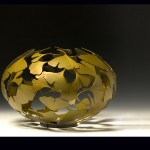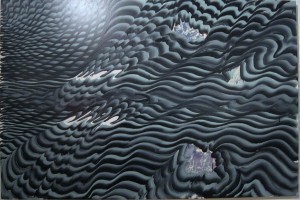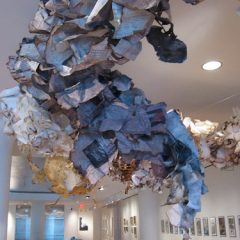The bacteria in our bodies could never lie about us, could they? Artist Simone Welsh collects swabs of bodily fluids, willingly given to her by her friends, places them in small circular plates filled with Trypticase Soy Agar (which, I learn, is a substance that facilitates the growth of bacteria), and displays it as part of her work. Six circular forms stand out on a simple grid of repeated geometric neon pink squares. From afar, the circles look like distorted images of a full moon, but in fact they are what chief curator of The Delaware Contemporary, Kathrine Page, calls “self-portraits of [Welsh’s] friends.” Welsh is one of nine student participants in Cadence, the ongoing University of Delaware MFA Thesis exhibition, curated by Molly Walker, at The Delaware Contemporary. Each of the exhibits is distinct, with the only common thread being an attempt to explore questions of identity and understand the inner-workings of the human mind.
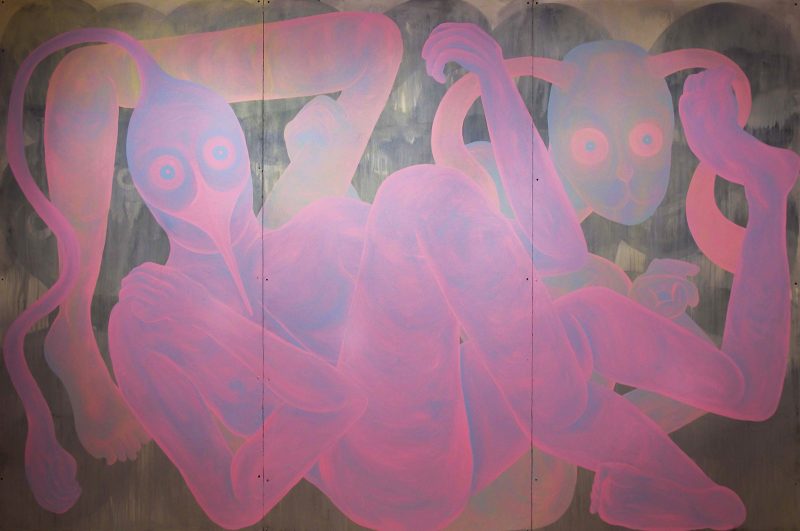
One result of this restless quest is a massive painting by Phát Lê, which runs across a whole wall. It shows a human form that is fragmented, fuzzy, unclear, and dream-like. Titled ‘One Day I will be a real boy,’ it is a representation of inner chaos. In contrast to Lê’s work, Daniel B Dias narrates his story with a simple scene inside a train. I stand in front of the piece for a long time, looking at the figures, some of which are well defined, some of which are smudged as if the journey were slowly diluting their true colors. I learn that Dias has been a long-time resident of three different countries (Brazil, China and America), and that his works reflect his cumulative experiences of constant transition.
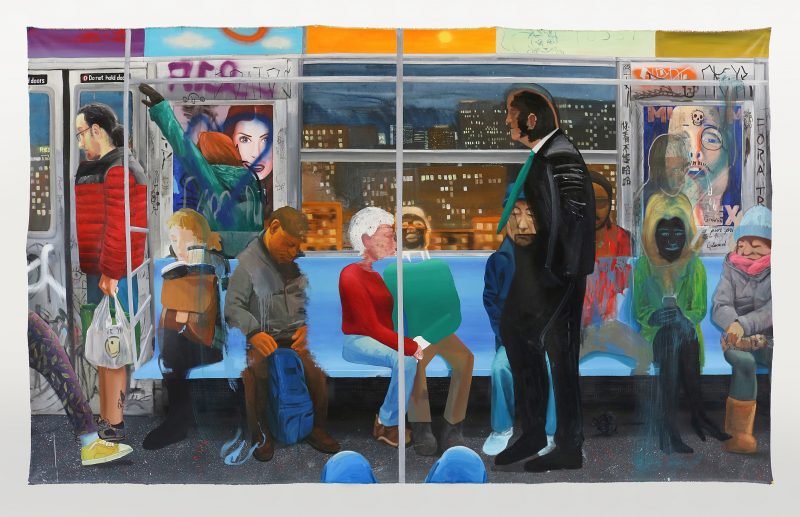
Townley Mateson’s ghost-like figures and everyday objects made of porcelain paper clay convey a certain sense of fragility. They also reflect time, movement and memory. She makes it easy for us to visualize the mind as a mound of clay being molded and fired by the able hands of everyday experience. As I stand and look at Celeste Morton’s paintings of faceless figures, I am left to fill in the missing creases on their faces. The strokes, as if done in with urgency, portray people in intimate positions. Whether they are sad, happy, or intoxicated with pleasure, is left to my mind, and my mind alone.
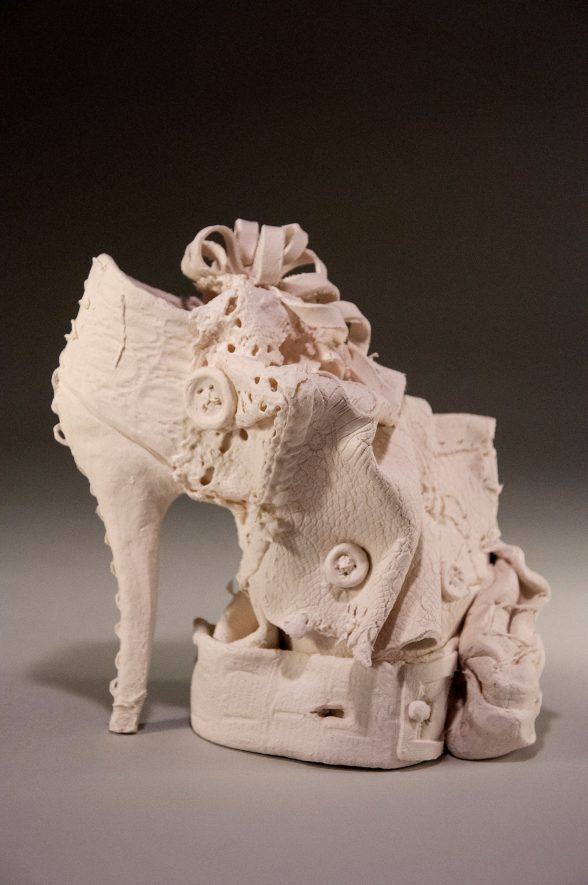
While Morton holds a mirror to my mind, Kate Testa’s installation made of a myriad materials (fabric, wood, steel and paper) tests how far it will stretch. She uses these materials to recreate moons, ants, clouds and other elements used in spells from Pennsylvania Dutch healer John George Hohman’s 1890’s book Pow-wows; or Long Lost Friend. To her, each of the objects, though unreal, has the energy to unleash its powers. Whether or not you feel the magic depends on how much you can trick your mind to believe.
In terms of both materials and technique, each of these 2018 University of Delaware MFA graduates has developed a distinct approach to exploring who they are and where they fit as they set off into the wider art world. Cadence includes work by Dona Altemus, Lisa Bennett, Rayna DeReus, Daniel B Dias, Phat Le, Townley Mateson, Celeste Morton, Kate Testa and Simone Welsh. The University of Delaware MFA thesis show, is on on view through June 3, 2018 at The Delaware Contemporary.


